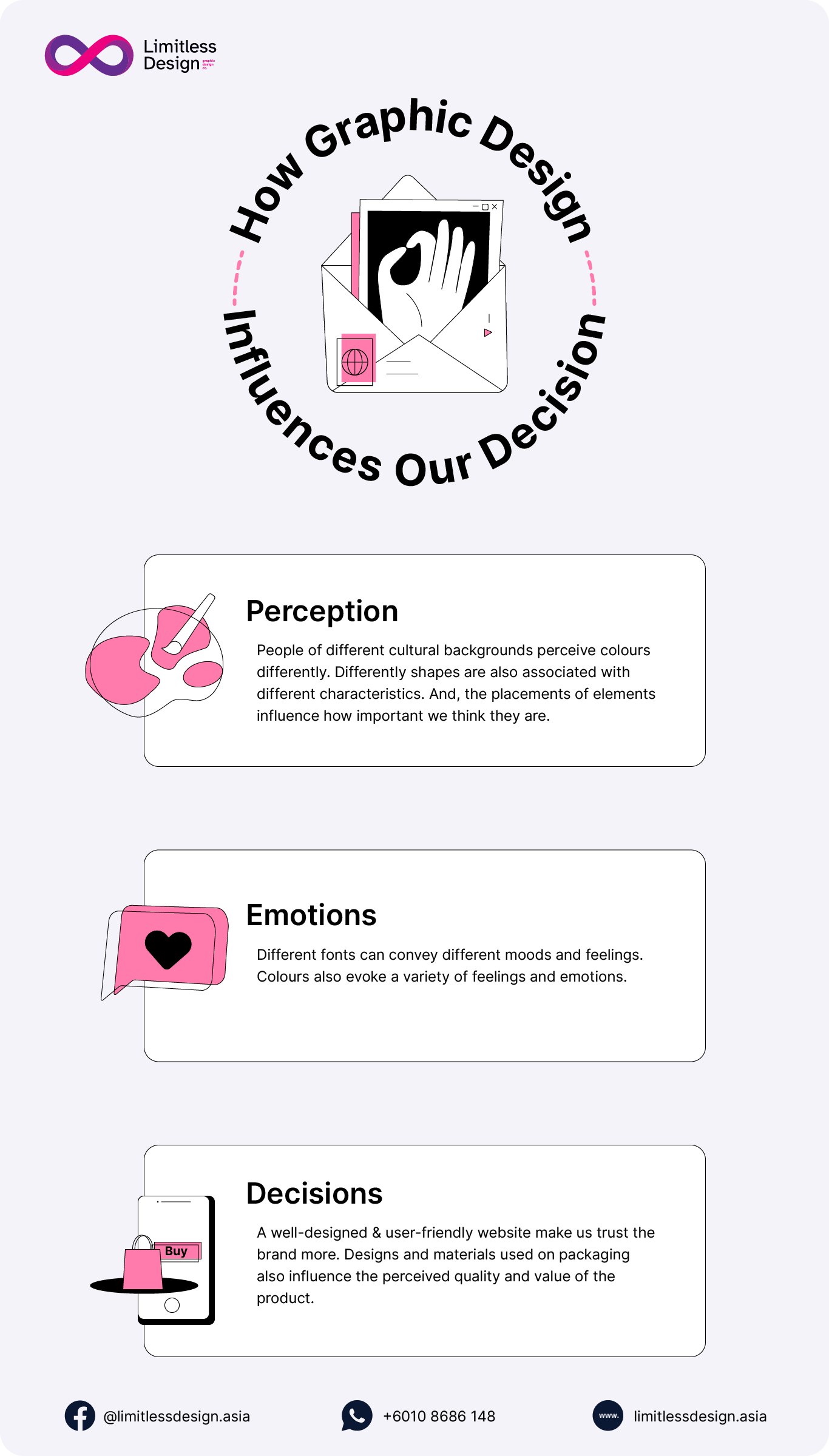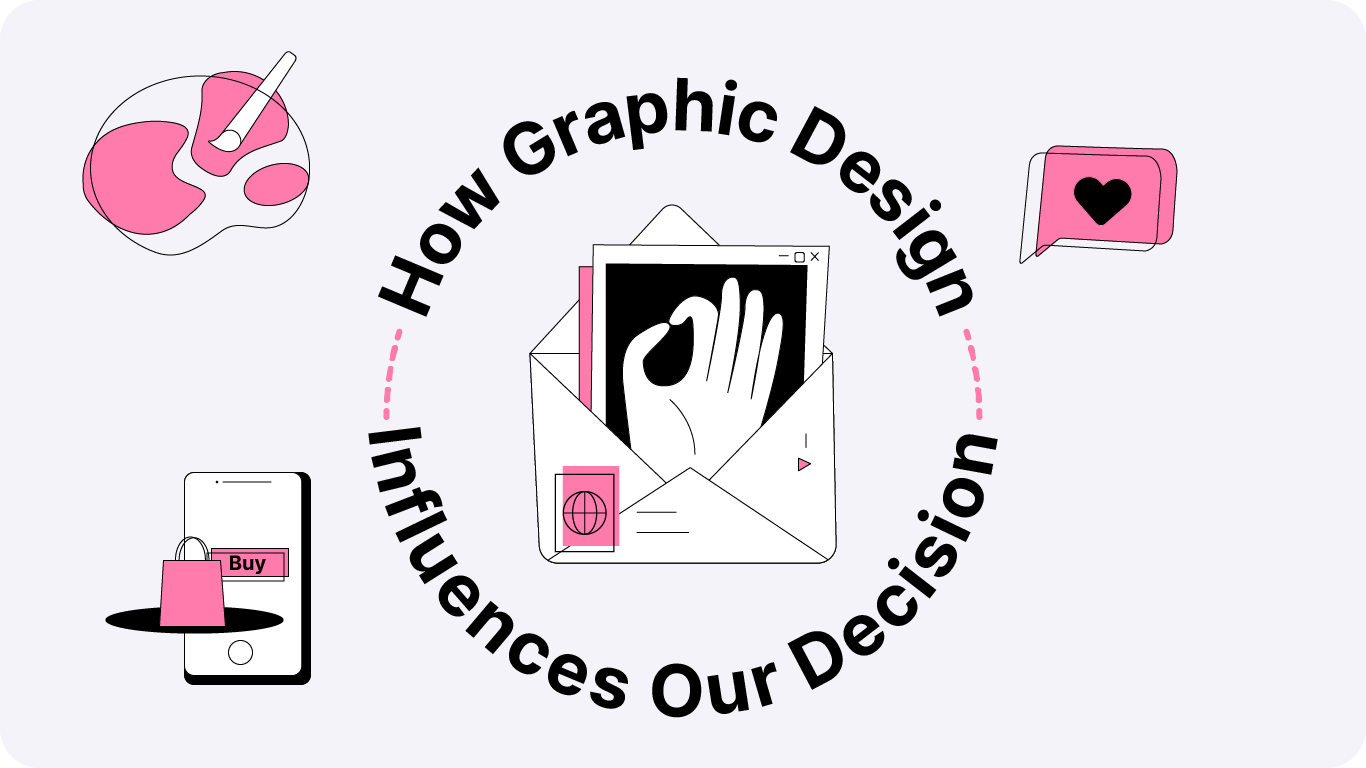Graphic design is an essential part of our daily lives, from the packaging of products we purchase to the logos we see on our screens. However, the influence of graphic design goes beyond just aesthetics. It can influence human perception, emotions, and decisions.
In this essay, we will explore how graphic design influences human perception, emotions, and decisions, and the ways in which designers can use this knowledge to create effective designs that resonate with their target audience.
Perception
Perception is the process of how we interpret and organize sensory information. Graphic design can affect perception in many ways, from the colours and shapes used to the placement of elements on a page. For example, research has shown that people perceive colours differently based on their cultural backgrounds. In Western cultures, red is often associated with passion and excitement, while in Eastern cultures, it is associated with luck and prosperity.
Similarly, the shape used in a design can influence how it is perceived. For example, rounded shapes are often perceived as soft and friendly. While sharp angles are associated with strength and aggression.
The placement of elements on a page can also affect perception. Our eyes naturally reads from left to right. So we place important elements on the left side of the page.
Emotions
Graphic design can also evoke emotions in the viewer, from joy and happiness to sadness and anger.
Typography is an element of design that can evoke emotions. Different fonts can convey different moods and emotions. For example, serif fonts are often associated with tradition and elegance, while sans-serif fonts are associated with modernity and simplicity.
Colour is also a crucial element of design that can evoke emotions. For example, blue is often associated with calm and trust, while red is associated with passion and excitement. Understanding the psychology of colour can help designers choose colours that evoke the desired emotions in their target audience.
Decisions
Graphic design also influences human decision-making. For example, a well-designed website can make it easier for a user to navigate and find the information they need. This leads to a better user experience and increased trust. On the other hand, poorly-designed websites are frustrating. And it makes us associate the brand with distrust.
Product packaging design also influences purchasing decisions. Research has shown that graphic design on packaging influences the perceived quality and value of a product, leading consumers to make purchasing decisions based on packaging alone.
Designers also use design elements to guide the user towards a particular action or decision. For example, a call-to-action button on a website can be designed in a way that draws the user’s attention and encourages them to click it. Similarly, the design of an advertisement can be used to highlight the unique selling points of a product and persuade the viewer to make a purchase.

Conclusion
Graphic design plays a significant role in shaping human perception, emotions, and decisions. Designers use this knowledge to create effective designs that resonate with their target audience. By understanding the psychology of colour, typography, and design elements, designers can create designs that evoke the desired emotions and influence decision-making.
However, it is essential to use this power responsibly. Designers should be mindful of the impact their designs may have and strive to create designs that are ethical and honest. Design should never be used to manipulate or deceive the viewer. Instead, it should be used to create effective communication that benefits both the viewer and the client.
Designers should use this knowledge to create designs that are both effective and ethical. By doing so, they can create designs that not only look great but also make a positive impact on the world.



